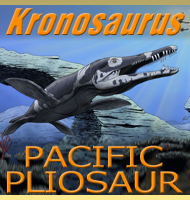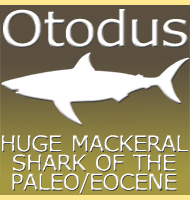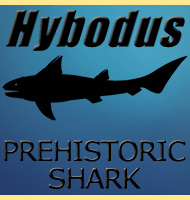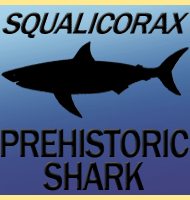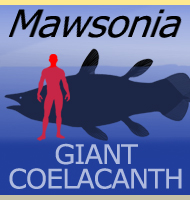


Taniwhasaurus
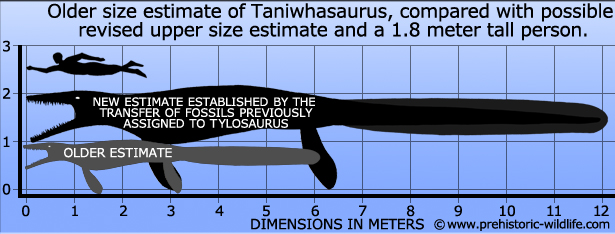
Name:
Taniwhasaurus
(Taniwha lizard).
Phonetic: Ta-ni-wa-sore-us.
Named By: Hector - 1874.
Synonyms: Lakumasurus, Tylosaurus
capensis, Tylosaurus
haumuriensis, Yezosaurus.
Classification: Chordata, Reptila, Squamata,
Scleroglossa, Mosasauridae, Tylosaurinae.
Species: T. oweni (type),
T.
antarticus, T. capensis, T. mikasaensis.
Diet: Carnivore.
Size: Often cited at being 6 meters long, the
addition of Tylosaurus haumuriensis has raised the
prospect that
Taniwhasaurus may have grown up to 12 meters
long.
Known locations: New Zealand - Conway
Formation. Antarctica, James Ross Island - Santa Marta
Formation. Japan.
Time period: Campanian of the Cretaceous.
Fossil representation: Several specimens, usually
of scattered skull and post cranial remains.
First
discovered in New Zealand in 1874, Taniwhasaurus
was named after
the Taniwha, kaitiaki of the sea that in Māori legend are protective
beings associated with specific locations. As a mosasaur
Taniwhasaurus was very similar to the famous Tylosaurus,
so much so
in fact that one Tylosaurus species, T.
haumuriensis is now
considered to be a synonym to the Taniwhasaurus
type species T.
oweni. Other species of Taniwhasaurus
are associated with different
locations with T. antarcticus being known from
Antartica, and T.
mikasaensis being known from Japan.
Like
Tylosaurus, Taniwhasaurus has
a lack of teeth on the front most parts
of the jaw, something that has been seen as an adaptation for ramming
prey suggesting that Taniwhasaurus had the same
method of hunting and
attack. The snout however is proportionately shorter than in
Tylosaurus, suggesting a
proportionately smaller prey preference.
Taniwhasaurus may have also been an opportunistic
predator that
attacked a range of different animals when able to, something that is
suggested from the known and greatly varied stomach contents of other
mosasaurs.
New
Zealand is a hot bed for many marine reptile discoveries, some of
which include the specialist mosasaur Prognathodon
as well as the
incredibly long necked plesiosaurs Mauisaurus
and Tuarangisaurus.
Further reading
- An unusual tylosaurine mosasaur from New Zealand: A new skull of
Taniwhasaurus oweni (Lower Haumurian: Upper
Cretaceous). - Journal of
Vertebrate Paleontology. 25 (2): 393–401. - Michael W. Caldwell, Robert
Holmes, Gorden L. Bell Jr. & JoanWiffen - 2005.
- The synonymy of the Late Cretaceous mosasaur (Squamata) genus
Lakumasaurus from Antarctica with Taniwhasaurus
from New Zealand and
its bearing upon faunal similarity within the Weddellian Province. -
Geological Journal. 42 (2): 203–211. - J. E. Martin & M.
Fern�ndez - 2007.
- New species of Taniwhasaurus (Mosasauridae,
Tylosaurinae) from the
upper Santonian-lower Campanian (Upper Cretaceous) of Hokkaido, Japan.
- Journal of Vertebrate Paleontology 28 (2): 339-348. - M. W. Caldwell,
T. Konishi, I. Obata & K. Muramoto - 2008.
- A New Hypothesis of the Phylogenetic Relationships of the
Tylosaurinae (Squamata: Mosasauroidea). - Frontiers in Earth Science. 7
(47). - Paulina Jim�nez-Huidobro & Michael W. Caldwell - 2019.
Random favourites
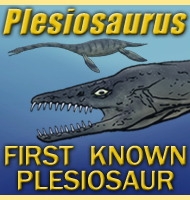 |
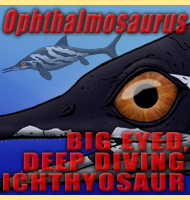
|
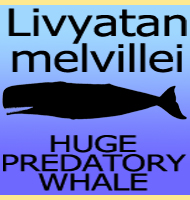
|
 |
